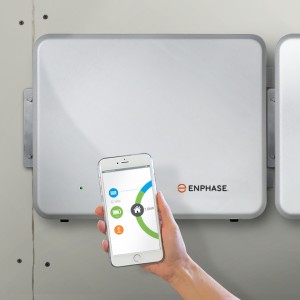It’s been six months since All-Energy 2019 and the transition to a distributed energy market is chugging along quietly; only noticed by those taking notice. For everyone else, things are looking just as they always have. You use energy and then you get a bill. And it will look this way for some time yet.
But for those paying attention, the changes are coming at us like Hunter Valley coal train. It doesn’t look fast but it is unstoppable and won’t be pushed back. Our sales department at EnviroGroup notice it. Battery sales are increasing and almost every enquiry we get includes batteries at some point. We are routinely selling our Redback and Tesla battery systems and my friends in other solar businesses are reporting the same thing. Not only batteries but electric vehicle (EV) charge stations. It’s definitely getting interesting.
But it’s not just the products that are interesting. For the last twelve months we have been getting requests from architects, town planners, councils and builders to advise them on how they should design and build structures that accommodate energy and sustainability systems rather than have them as a bolted on afterthought. Personally, I am sitting on three different independent focus groups and EnviroGroup as a whole is consulting to a number of different Victorian councils.
The answer always begins the same way: your building is not just a series of boxes to store people and things. It is an organism which has a nervous system and energy needs. Up until recently, the electrical system of even a brand new house is essentially the same as a house built in 1920. Wires and outlets, switches and lights. That is about as sophisticated as it gets. Energy comes in and gets used and a bill follows.
Not any more. You can make houses very smart now. The electrical system can be controlled with an intelligent hub enabling remote changes to lighting, air-conditioning and security. You can even watch your dog and have a robot keep it occupied while you’re at work. All of this requires energy and like all organisms, it is energy that keeps things alive. A house with solar is not just an importer of energy but an exporter. Your solar provides you with what it can and the grid provides what it can’t. Your bill reflects the balance. If you send your energy back to the grid (export) they grudgingly pay you a feed-in tariff and your bill might even be in credit. This was a massive step forward and the start of the democratization of energy.
The problem is that as more and more solar systems get connected, the impact on the old centralized network becomes increasingly dangerous and the network distributors constantly change the rules to shore up a network calamity. Our industry is not going to stop installing systems so it is the network itself that must change and it is. We are moving rapidly to a distributed model where every system is interconnected with other systems, even if they are nowhere near each other. Since solar only works in the day and wind turbines turn only when the wind blows, the periodic nature of renewables makes network planning a big problem but batteries change that. With batteries we can store the clean energy and put it back to the grid when the grid needs it most. We can do this with extremely large battery parks like the one Elon Musk built for South Australia or we can have thousands of batteries all connected together by software so that they appear as one big battery. We are getting both.
As more and more people take up solar battery storage for the home, the Virtual Power Plant is becoming the next big thing. Your battery will not only serve your house but residual energy or capacity not being used will be linked to all the other systems so that the network managers can control the stability of the network with greater ease. Ultimately, the distributed network will be more reliable, more stable and just as important, more democratic. Your house will effectively be a shareholder in the new energy economy.
So does this affect your buying decisions?
This is the point we are making to our customers and to our focus groups. You should not just think of solar as an offset for your electricity bill but as a participant on the energy market. Once you are connected to a VPP, your house will have incoming and outgoing revenue streams depending on your generation, storage and consumption. Smart homes will keep your usage as low as possible and your energy systems will provide revenue or at least keep the bills away. Current concepts like feed-in tariffs, payback periods and returns on investment will disappear and you will be more concerned about which VPP offers you the best stream of revenue.
Right now, you should go outside and have a look at your roof. If there’s no solar on it, you are losing money. You are living in a bygone era. Start looking at your roof as valuable real estate that should be working for you. It’s like owning a block of land with nothing on it; costing you money and providing you with nothing. Think about your house as a revenue stream rather than a cost centre. If you think this is a pie-in-the-sky story, you are wrong. It’s happening now. VPPs are already here and you can join them.
So when you are talking with your solar installer (hopefully it’s EnviroGroup!) don’t just talk about panels and price. Talk about where you want to be going forward. We can help you develop a plan so your house or business can be a sophisticated participant on the new energy market.





